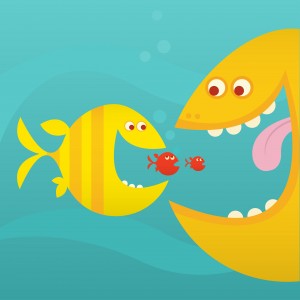The situation has to be right
My last column looked at how to play the nuts in limit hold’em. This column looks at situations on the other side of the spectrum – trash hands.
Playing the nuts is relatively easy, since you simply are looking to maximize the value of your hand. However, there are many situations in which you flop absolutely nothing. This doesn’t necessarily mean that you should be giving up your hand on the flop. Advanced players are always looking for situations in which they might be able to steal the pot with a bet, given the correct pot odds to try to do so.
I define a trash hand as one that has no pairs, no straight or flush draws, and does not have two overcards; for example, the A
Let’s look at some situations in which playing trash hands might be profitable. As usual, when you are the preflop raiser against one or two opponents, you generally should make a continuation bet, hoping to steal the pot.
Sometimes, you get a good bluffing opportunity when playing out of the blinds with an all-rag flop, or when there is a rainbow flop with only one high card. For example, you are in the big blind with an 8-6-4 flop against two early-position callers. Betting out might win the pot, as it is unlikely that this flop helped your opponents.
Another example is with a Q-5-3 flop and you are in early position with A-10. You might bet out into one or two opponents, representing a pair of queens, hoping that they will fold. When the flop has possible flush or straight draws or two high cards, be less inclined to make these types of bluffs, as it is more likely that your opponents either have a hand or have a draw. The exception to this is when you are acting last and both of your opponents have checked. In this case, bluffing may be successful, since your opponents have shown weakness and they might suspect that you were the one helped by the flop.
There are many different scenarios when bluffs might work, but be careful in playing these trash hands. Remember, bluffing is less profitable when you don’t have many outs to improve your hand should you be called. Also, bluffs against three or more opponents are rarely profitable with these types of hands.
Here are a few hands to evaluate, taken from my book Internet Texas Hold’em. Be sure to cover the answers and see if you agree with my recommended strategies.
1. $20-$40: You hold the 6






































Answer: By definition, this really isn’t a trash hand, since you have a gutshot-straight draw, but 6-3 isn’t exactly a stellar hand, either, without a pair. However, even if an opponent calls, you might win even with another 6, so you probably have seven outs. The small blind has checked, so you probably have to beat only the button player who limped in. The jack gives you a scare card and makes it less likely that your opponents hold overcards. The small pot also gives your opponents incentive to fold. Go ahead and bet to try to win the pot. Bet.
In the actual hand, the player bet and his opponents folded.
2. $20-$40: You hold the 8



































Answer: This flop does not have a high card to protect against your opponents playing overcards; however, the low pair on the flop provides this protection. A rainbow flop protects you against opponents on a flush draw. Bet the flop, and if only the early-position player calls, go ahead and bet the turn on any card. Bet.
In the actual hand, the player bet and only the early-position player called. The turn was the 2









3. $20-$40: You hold the 5


































Answer: You actually have four outs to the straight draw, which gives some value to the hand; however, you are playing against four opponents, and three have not yet acted. A queen is a likely card for three opponents who did not raise preflop. It would be very difficult to get all of your opponents to fold on this flop. You should check, and call only if several opponents play the flop, to justify the odds for your draw. Check and fold if three opponents do not play the flop.
In the actual hand, the player checked, the button bet, and the small blind raised. Both showed a pair of queens on the river.
Submit your review | |










